SMALL INDEPENDENTS
By the 1920s, film companies were springing up throughout the country to produce “Negro films” for the proliferating race movie theaters (sometimes called ghetto theaters). Among the black independents were the Unique Film Company of Chicago, whose first and only production was Shadowed by the Devil, a three-reeler based on an original story by Mrs. Miles M. Webb, the wife of the director of the company; the Seminole Film Producing Company of New York, formed by Peter P. Jones (formerly of the Peter P. Jones Photoplay Company), whose uncompleted first production Shadows and Sunshine was adapted from an original story by Jessie Shipp, a distinguished black stage director who had been associated with the Williams and Walker musical comedies of the early 1900s; the Leigh Whipper Film Company, headed by actor Leigh Whipper, who had already released several newsreels for black theaters through his Whipper Reel Negro News; the Booker T. Film Company of Los Angeles, founded by actor Sidney P. Dones, who starred in the company’s only production, a Western entitled The $10,000 Trail; the Maurice Film Company of Detroit, whose three releases carried strong moral messages and starred the company’s founder, Richard Maurice; Colored Feature Photoplay, Incorporated, headquartered in Harlem, which included several whites on its board of directors and whose stated objectives were “to carry a message to the hearts of those who patronize motion pictures in every land” and “to feature colored people and the beautiful home life and achievements of the Negro”; the Paragon Pictures Corporation of Jamaica, Long Island, and later of Harlem, which owned its own studio and film-developing laboratory; and the Rosebud Film Corporation of Hollywood, which convinced Clarence Brooks to come out of retirement to star in its only release, Absent (1928).[1] As Thomas Cripps writes, most of the emerging black companies “floated on a wave of good intentions, but only a few struggled into production,” while others survived long enough to release only one or two pictures. Their ambition often outstripped their capacity and their potential so that in the end “they did not fail so much as they were overwhelmed by the impossible”.[2]
EBONY FILM CORPORATION
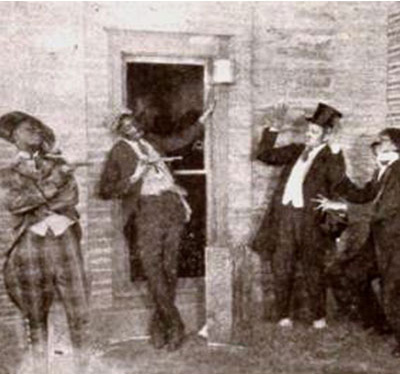
A Black Sherlock Holmes
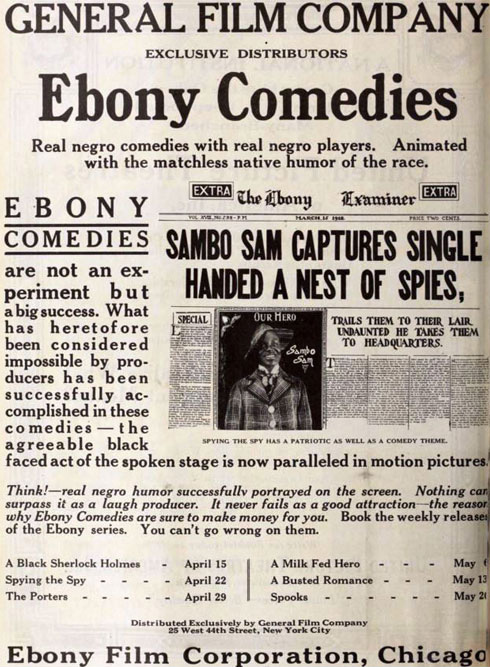
Spying the Spy
In addition to its own films, Ebony re-released under its name a series of racist shorts originally screened around 1915 by Historical Feature Films. Typical of those shorts were Aladdin Jones, about a shiftless “darky” named Jonesy who finds a magic lamp but uses it to wish only for liquor and “fo’ a shack to sleep in,” and Money Talks in Darktown, in which the uncultured, dark-skinned Sam tries to win Flossie’s affection by lightening the color of his skin before realizing that her only concern is the color of his money.
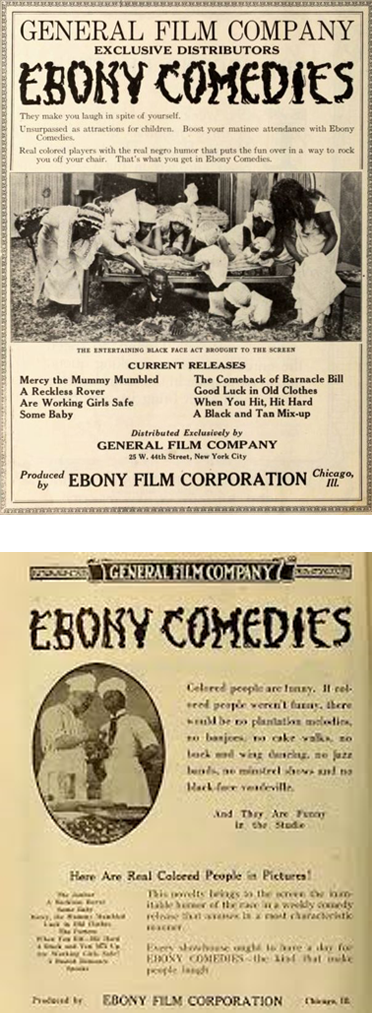
Ads for the Ebony Comedies* insisted
that “Colored people are funny.”
(*Note the composition of the title words “Ebony Comedies.”)
Tony Langston, theatrical editor of the Chicago Defender, characterized Ebony’s degrading and offensive comedies as “what is commonly called ‘crap’” and advised “members of the race” to save their money and their self-respect by avoiding the productions.[6] Ultimately black theaters began refusing to book Ebony’s films, a move that led to the company’s demise in 1919. But other filmmakers continued to produce comparably low cinematic fare. In 1921, for instance, the Harris Dickson Film Company released The Custard Nine, a film based on Dickson’s series of “Colored stories” from The Saturday Evening Post in which Virgil Custard leads Vicksburg’s black baseball team through various farcical adventures. Notable only for the debut of Clarence Muse, The Custard Nine offered naive and negative portrayals of black life, to which black audiences reacted with great disdain. Lester Walton wrote in the New York Age (October 29, 1921) that Dickson’s stories, which “sought [not only] to make the plantation Negro ridiculous, but the professional Negro as well,” were the very reason that he stopped reading the Post. “Mr. Dickson has never heard colored physicians use the language of the illiterate and uneducated,” wrote Walton, “yet he does not hesitate to poke fun at them with the same vigor and consistency as he does at lower types.”[7] Similarly, in the mid- to late-1920s, Octavus Roy Cohen teamed with Al Christie on a series of “all-colored shorts,” most of them based on Cohen’s stories for The Saturday Evening Post. Those shorts, which included Brown Gravy, The Framing of the Shrew, The Lady Fare, The Melancholy Dame, Music Hath Harms, and Oft in the Silly Night, incorporated “Negro dialect” and many of the other familiar stereotypes that black filmmakers both avoided and deplored; typically “made fun of Negro lawyers and doctors by depicting them as familiar coons”; required the actors to appear in blackface; and ultimately “represented the underground movement at its worst”.[8]
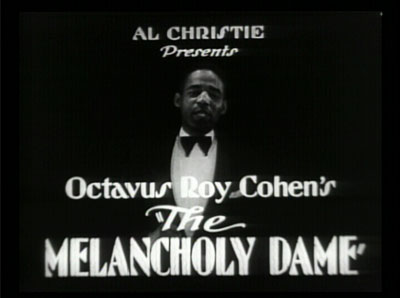
The Melancholy Dame
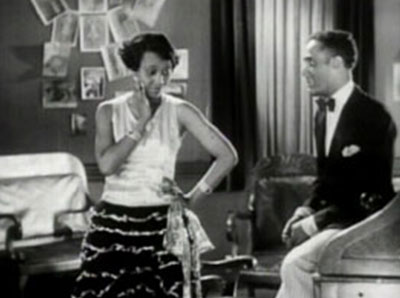
Framing of the Shrew
